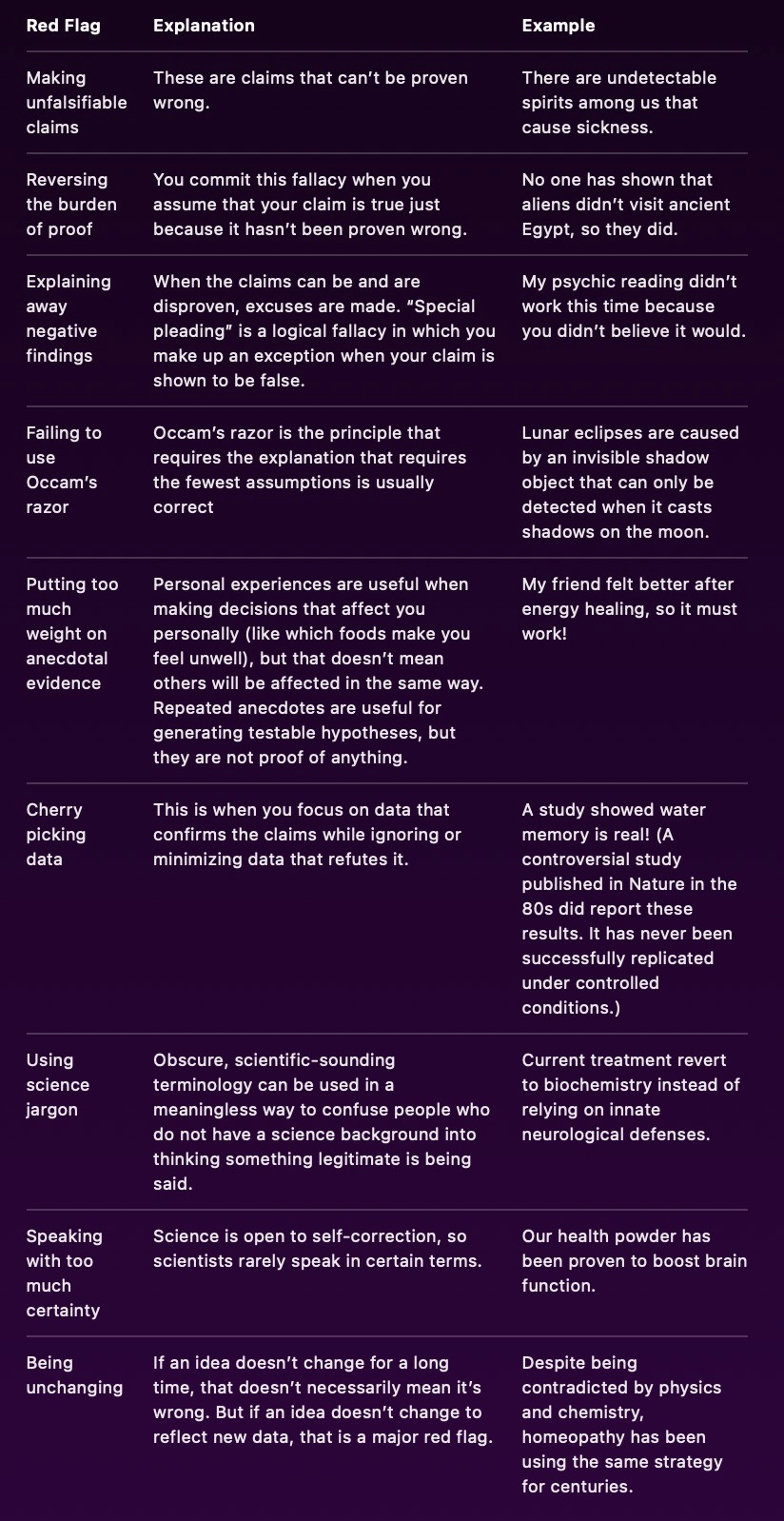By John Droz, Jr., Jul 29, 2024 @ Critically Thinking About Select Societal Issues
I am perusing an interesting website, which aspires to teach children to Critically Think. This is a fine site put together by teacher Stephanie Simoes (who I don’t know, yet).
She also has a connected Blog that delves into related topics. I liked one so much that I’m repeating it verbatim here. (Note the connection with the Scientific Method, another key part of the K-12 Science curriculum that the Left is aggressively trying to undermine — but few parents, teachers, scientists, legislators, Conservative organizations, etc. are objecting.)
———————— How to Spot Pseudoscience ————————
There are some misconceptions about what pseudoscience is. Before getting into its red flags, I will clarify what it is (and what it is not).
Pseudoscience DefinitionPseudoscience is a system of explanations, methods, and assumptions that may look scientific, but does not follow the scientific method. Another term for pseudoscience is false science.
Pseudoscience is not the same as bad science.
Bad science is a faulty version of good science. It follows the scientific method, but it makes mistakes. For example, in bad science, there may be methodological errors in the experiment or bias in the study design or interpretation of results. (Study replication is very important for identifying these types of mistakes.) Since bad science is a flawed version of good science, it is not completely off-track. With some improvements, such as better experimental design, bad science has the potential to become good science.
Pseudoscience, on the other hand, can never become good science because it is not science at all. Science requires testable hypotheses, rigorous experimentation, and conclusions that can change in the face of new data. Pseudoscience does not share these characteristics.
Pseudoscience ExamplesSome ideas "supported" by pseudoscience are:
- Homeopathy
- Flat earth
- Phrenology
- Astrology
- Animal magnetism
Here is a non-comprehensive list of some pseudoscience red flags to look out for. These are signs that you should approach that idea or practice with skeptical caution.
So, good stuff, right? One thing I’d add is that many examples of pseudo-science are actually political science, masquerading as real Science. Critical Thinkers will not be fooled…
Here are other materials by this scientist that you might find interesting:
Check out the Archives of this Critical Thinking substack.
WiseEnergy.org: discusses the Science (or lack thereof) behind our energy options.
C19Science.info: covers the lack of genuine Science behind our COVID-19 policies.
Election-Integrity.info: multiple major reports on the election integrity issue.
Media Balance Newsletter: a free, twice-a-month newsletter that covers what the mainstream media does not do, on issues from COVID to climate, elections to education, renewables to religion, etc. Here are the Newsletter’s 2024 Archives. Please send me an email to get your free copy. When emailing me, please make sure to include your full name and the state where you live. (Of course, you can cancel the Media Balance Newsletter at any time - but why would you?
Thanks for reading Critically Thinking About Select Societal Issues! Please pass a link to this article on to other associates who might benefit. They can subscribe for FREE to receive new posts (typically about once a week).

No comments:
Post a Comment